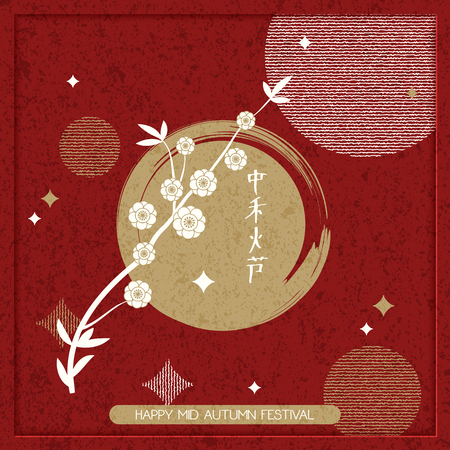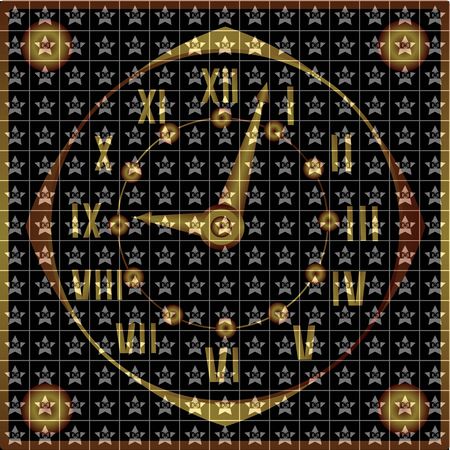The Veil Between Worlds: Why Christmas Is a Magical Time
In the heart of the British winter, when frost patterns lace windowpanes and the world hushes beneath a blanket of darkness, Christmas arrives not only as a season of merriment but also as a time steeped in ancient wonder. For centuries, our ancestors believed that the twelve days of Christmas—spanning from Christmas Day to Twelfth Night—marked a period when the boundary between the seen and unseen worlds grew gossamer-thin. This was not merely a poetic fancy but a cherished intuition woven into the very fabric of Yuletide customs across Britain. Village hearths glowed with more than just firelight; they shimmered with possibility, as old tales whispered of spirits wandering freely, omens revealing themselves, and mysteries waiting to be unravelled by those attuned to subtler realms. The air itself seemed charged with a gentle expectancy, inviting ordinary folk to peer beyond the veil, to listen for messages from ancestors or glimpses of what lay ahead. In this liminal space, where midwinter’s darkness met the promise of returning light, Christmas became far more than festivity—it was an invitation to connect deeply with life’s mysteries, guided by intuition, tradition, and a touch of magic.
Yuletide Oracles: Traditional British Divination Games
As the winter solstice casts its long shadows across the British Isles, families and friends have long gathered by flickering hearths to engage in curious customs designed to divine what the coming year may hold. These traditions, woven with both mysticism and merriment, transform Christmas Eve and Twelfth Night into portals for glimpsing destiny’s secret hand. Let us journey together through some of these enchanting Yuletide oracles, where laughter mingles with suspense and every ritual carries a whisper of magic.
The Apple Peeling Prophecy
Among the most beloved of these customs is the apple peeling game—a ritual as simple as it is spellbinding. By candlelight, each participant peels an apple in a single, unbroken spiral. With a hopeful heart, they toss the peel over their shoulder. As it falls to the ground, eager eyes search for the shape it forms: tradition holds that it reveals the initial of a future sweetheart or significant figure in one’s life. In many households, this playful rite was a highlight of Christmas Eve, infusing the night with gentle anticipation and good-natured competition.
Burning Nuts: Love’s Fiery Oracle
No less captivating was the burning nuts divination, often played on Twelfth Night. Each person would claim a pair of hazelnuts—one named for themselves and one for a potential love interest. Placed side by side upon the hot hearthstone or grate, the nuts’ fates were closely watched. If they burned steadily together, romance was foretold; if they sputtered apart or popped explosively, it was said to signal discord or unrequited affection. This simple act became an annual fireside drama—its outcome discussed in whispers well into New Year’s Day.
The Reading of Shadows
Perhaps most mysterious was the art of reading shadows cast by candlelight on Christmas night. Families would sit in near silence as individuals stepped forward to gaze at their own shadows dancing against the walls. Some believed that an unusually large or oddly shaped shadow presaged good fortune or an unexpected visitor; others looked for omens in fleeting movements or shifting silhouettes. This practice connected participants not only to their futures but also to ancestral beliefs about light, darkness, and transformation during the sacred turning of the year.
A Glimpse into Yuletide Divination Practices
| Custom | Main Participants | Purpose | Typical Outcome |
|---|---|---|---|
| Apple Peeling | Youths & Singles | Reveal romantic initials | Letter-shaped peel on floor |
| Burning Nuts | Couples & Suitors | Test compatibility/romance | Nuts burn together or apart |
| Reading Shadows | Families & Friends | Foretell fortune or visitors | Interpretation of shadow shapes |
The Heartbeat of British Yuletide Mysticism
Though centuries may have softened their literal belief, these divination games endure as cherished threads within the festive tapestry—reminding us that wonder thrives where tradition and imagination entwine. Whether seeking love’s promise or fortune’s favour, Yuletide’s mystical customs invite us all to gather close, trust our intuition, and let ancient whispers guide us toward new beginnings.

3. Symbols in the Holly and Ivy: Nature’s Prophecies
As winter settles over the British Isles, the ancient practice of adorning hearth and home with holly, ivy, and mistletoe carries a whisper of something deeper—a tradition rooted in mystical customs that reach far beyond simple decoration. These evergreens were once thought to be vessels for nature’s wisdom, holding the power to reveal hidden truths and divine the year ahead. Our ancestors watched closely as they gathered these sacred greens, believing each carried messages from the spirit realm.
The Whispering Leaves: Holly’s Protective Magic
Holly’s glossy leaves and bright berries were more than festive cheer; they were believed to ward off evil spirits and misfortune. Families would tuck sprigs above doorways and mantelpieces, trusting holly to shield them through the long winter nights. In some rural villages, it was said that the number of berries foretold abundance or hardship—plentiful red berries promised a fruitful year, while a sparse crop warned of challenges ahead.
Ivy: Binding Fates and Fortunes
Ivy, with its tenacious vines winding around tree trunks and stone walls, symbolised resilience and fidelity. During Yuletide celebrations, young women might weave ivy into garlands or wreaths, hoping it would reveal hints about their romantic future. If ivy leaves remained green throughout the Twelve Days of Christmas, it was seen as an omen of steadfast love or lasting prosperity for the household.
Mistletoe: The Enigmatic Messenger
Mistletoe’s mystical reputation is perhaps most legendary of all. Hung aloft in farmhouse beams or great halls, it was believed to bridge worlds—the living and the spirit realm—offering blessings for peace and reconciliation. Some even claimed that the way mistletoe was placed or fell from its perch signalled the turning points of fate: a bough landing near a guest might foretell a new friendship or unexpected fortune in the coming months.
Thus, through every carefully chosen sprig and garland, our ancestors read nature’s signs. Each holly leaf, ivy vine, and mistletoe berry became part of a silent conversation with forces unseen—a gentle reminder that even in the heart of winter’s darkness, hope and prophecy could flourish among the greenery.
4. The Twelve Days: Dreams, Omens, and Portents
The Yuletide season in Britain has long been shrouded in a veil of enchantment, with the Twelve Days of Christmas holding particular significance as a liminal space between the old year and the new. Folk wisdom whispered that each day—beginning on Christmas Day and ending with Twelfth Night—carried its own prophetic weight. Villagers, farmhands, and gentlefolk alike would observe these days closely, believing that the weather, dreams, and curious happenings foretold what was to come.
The Weather Lore of the Twelve Days
It was said that the weather experienced on each of the Twelve Days forecasted the conditions for each corresponding month of the year ahead. For example, a bright and blustery St. Stephen’s Day (Boxing Day) might hint at a lively April. This sacred calendar offered both comfort and caution to those whose livelihoods depended on nature’s moods.
| Twelve Day | Date | Month Forecasted |
|---|---|---|
| Christmas Day | 25 December | January |
| Boxing Day (St. Stephen’s) | 26 December | February |
| St. John’s Day | 27 December | March |
| Holy Innocents’ Day (Childermas) | 28 December | April |
| St. Thomas Becket’s Day | 29 December | May |
| St. Egwin’s Day | 30 December | June |
| New Year’s Eve (St. Sylvester’s) | 31 December | July |
| New Year’s Day | 1 January | August |
| St. Basil’s Day | 2 January | September |
| The Feast of the Holy Name of Jesus | 3 January | October |
| Twigletide (St. Genevieve) | 4 January | November |
| Twelfth Night (Eve of Epiphany) | 5 January | December |
The Dreamtime Veil: Portals to Prophecy
The nights between Christmas and Twelfth Night were believed to be especially potent for dreams—a shimmering threshold where spirits wandered more freely, and ancestral voices could be heard whispering truths yet to unfold. Folk tales abounded of maidens placing sprigs of holly beneath their pillows or fasting before bed, hoping for visions of future lovers or fortunes. Others claimed that a dream dreamt on these nights held double power: not merely a reflection of one’s thoughts, but a true omen cast by the unseen world.
Liminal Rituals and Symbols
This sense of magical anticipation wove itself through rural cottages and stately manors alike. From noting which direction the wind blew at midnight to watching for animal behaviour in barns, every detail became charged with meaning during these mystical twelve days. The ancient customs remind us that Christmastide is not only a time for feasting but for listening—to our dreams, our hearts, and the subtle signs that flutter just beyond ordinary sight.
A Season Between Worlds
Beneath twinkling candlelight and evergreen garlands, Britons of old tuned their senses to subtle portents in weather and dream, trusting that if we listen closely enough during this liminal season, we might catch a glimpse of fate’s design for the year ahead.
5. Wassailing and Charms: Blessings for Hearth and Harvest
Step into the lively tradition of wassailing, a custom woven into the very heart of English Yuletide folklore. On cold December nights, villagers would gather beneath ancient apple trees or outside homesteads, mugs of steaming spiced cider in hand, their voices raised in boisterous song. But wassailing was far more than merrymaking; it was a ritual of communal magic, intended to invoke blessings for the home and ensure a bountiful harvest in the coming year.
The word “wassail” itself springs from the Old English toast “waes hael”—be in good health. Groups known as wassailers would process from door to door or orchard to orchard, singing traditional carols and reciting age-old charms. Each verse and chorus was imbued with intention: to chase away misfortune, awaken the spirits of the land, and invite prosperity to both hearth and field.
A Ritual of Song and Spirit
In rural communities, wassailing held an almost mystical significance. The act of pouring cider onto tree roots—an offering to nature—was accompanied by chants such as “Old apple tree, we’ll wassail thee / And hoping thou wilt bear.” This practice blurred the boundary between Christian celebration and older pagan beliefs, recognising the unseen energies that shaped everyday life.
Charms and Tokens
Alongside song, small charms were sometimes left among the branches or hidden near thresholds—a sprig of holly for protection, a coin for luck. These humble tokens became conduits for collective hopes, each one echoing a silent wish for safety, warmth, and abundance through the dark winter months.
Community and Good Fortune
Wassailing fostered a powerful sense of unity. Neighbours joined voices not only to celebrate but to weave a shared spell of goodwill. In this magical convergence of music, ritual, and heartfelt intention, communities found strength against hardship and uncertainty—reminding us that, through togetherness and tradition, we can all help shape the fortunes yet to come.
6. Preserving the Magic: Modern Echoes of Ancient Custom
As the December air fills with carols and laughter, we find ourselves nestled in a world where echoes of ancient Yuletide enchantments still shimmer at the heart of modern British Christmas. These mystical customs, once whispered by candlelight and passed down through generations, subtly inform the ways we celebrate today—sometimes in ways that slip by unnoticed, yet always with an undercurrent of wonder.
Within bustling Christmas markets and cosy living rooms alike, the age-old practice of divination persists—perhaps now cloaked in the joviality of pulling crackers or the anticipation of discovering a silver sixpence hidden within a slice of Christmas pudding. Each tradition carries a hint of that old magic: a wish made as the pudding is stirred clockwise, a hopeful glance at the holly hung above the threshold, or a playful fortune told from the flames of a Yule log burning bright.
Though we may no longer seek omens in winter’s twilight quite as our ancestors did, these rituals have evolved into cherished customs that foster togetherness and spark joy. They remind us that Christmas is not merely a season, but a tapestry woven from centuries of belief and imagination—a time when the veil between past and present thins just enough for us to glimpse the mysterious and the marvellous.
So as we gather this festive season, let us pause to honour these mystical threads that bind our celebrations to those who came before. In every toast raised, every story shared by firelight, and every small act of hope for the year ahead, the spirit of Yuletide divination endures—an invitation to embrace possibility, delight in connection, and believe once more in Christmas magic.

